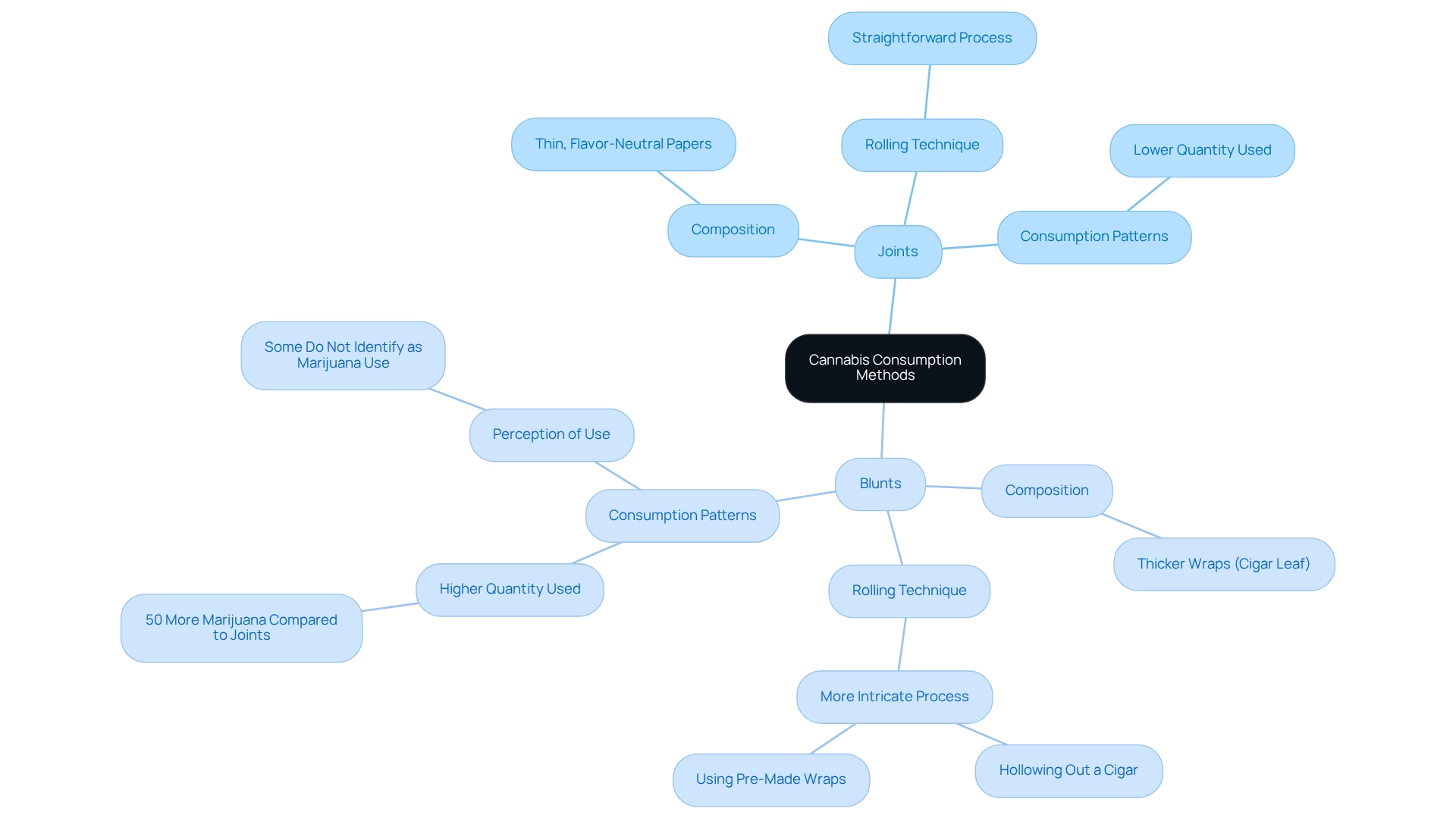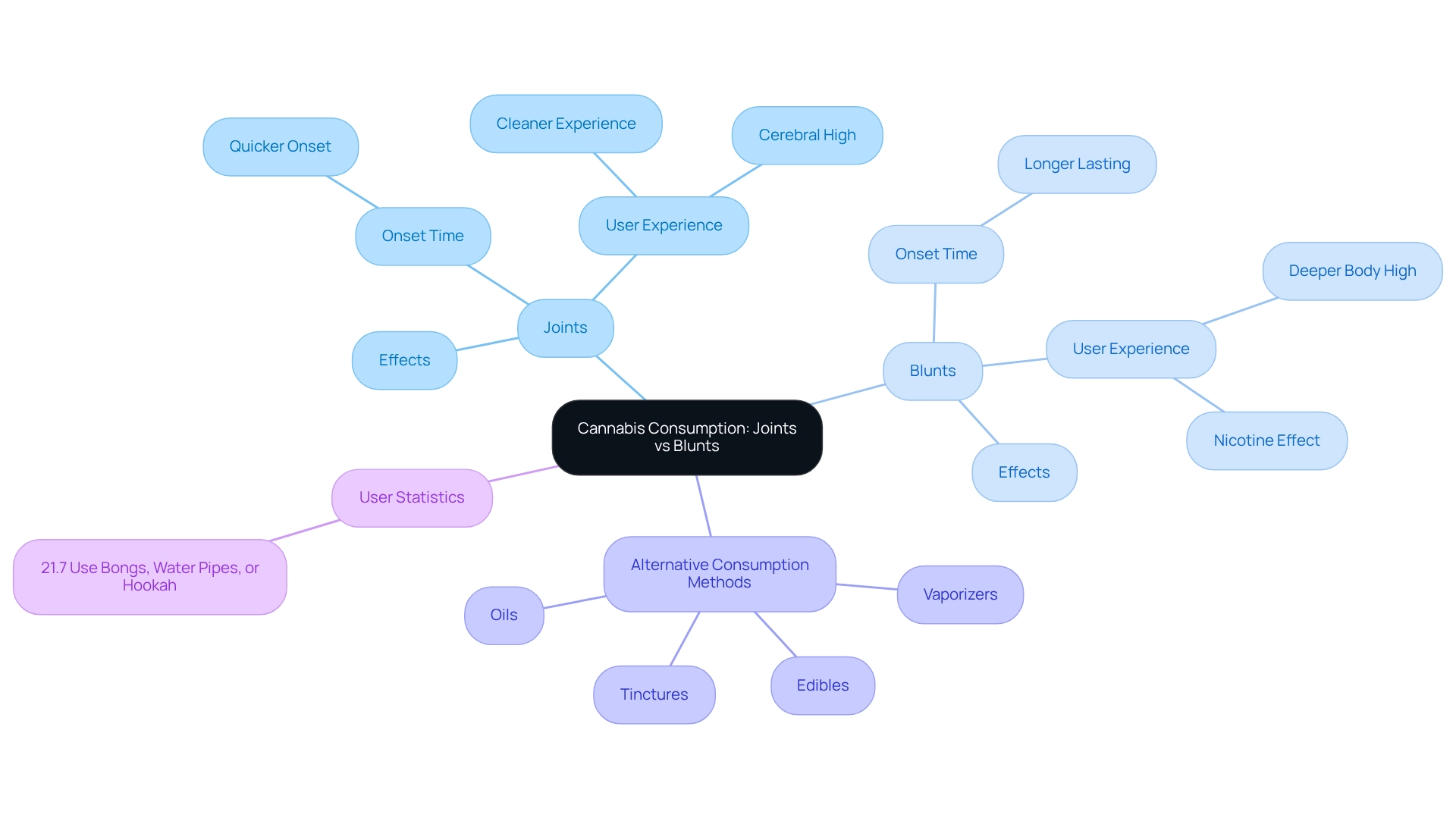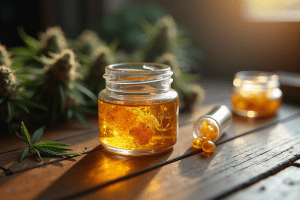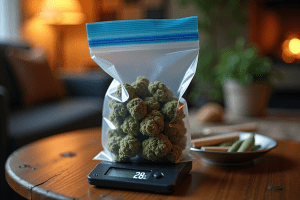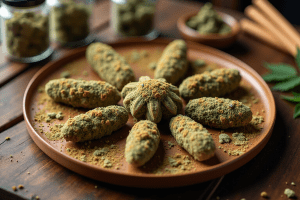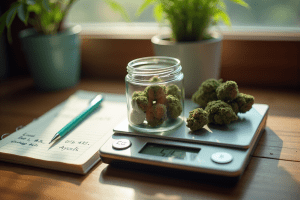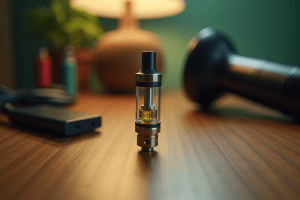Overview
When it comes to understanding the differences between joints and blunts, it’s important to consider their unique compositions and effects. Joints are hand-rolled using thin paper and contain only marijuana, while blunts are larger, wrapped in tobacco leaves, and often include a blend of marijuana and herbs. Have you ever thought about how these differences might influence your smoking experience?
These variations not only affect the flavor but also carry health implications that deserve our attention. Generally, joints are viewed as a healthier option compared to blunts, which introduce additional risks due to their tobacco content. It’s vital to be informed about these factors as you make choices that align with your well-being.
As we explore these options together, let’s reflect on what matters most to you in your smoking experience. Understanding the differences can empower you to make informed decisions that resonate with your values and health goals.
Introduction
In the evolving landscape of cannabis consumption, two methods stand out: joints and blunts. Have you ever wondered how these two differ? While both offer unique experiences, their fundamental differences in composition, flavor, and health implications cater to distinct preferences among users.
Joints, hand-rolled with thin paper, promise a clean and uncomplicated cannabis experience, inviting you to appreciate the essence of the plant. On the other hand, blunts, wrapped in tobacco leaves, deliver a richer flavor and a more intense high, appealing to those seeking depth in their experience.
As the popularity of these methods continues to rise, understanding their characteristics becomes essential for both new and seasoned consumers. This exploration delves into the key distinctions between joints and blunts. Together, we will examine their effects, rolling techniques, and the health considerations that influence user choices. By becoming informed, you empower yourself to make choices that align with your preferences and values.
Define Joints and Blunts: Key Characteristics
When discussing joint vs blunt, it’s important to note that a joint is a hand-rolled cigarette that contains only ground marijuana, wrapped in thin rolling paper. This method is generally more compact and provides a cleaner marijuana experience, free from additives. In contrast, when considering joint vs blunt, a blunt is larger, crafted from a leaf or cigar wrap, and contains marijuana often blended with herbs. This fundamental difference in wrapping material not only affects the smoking quality but also influences the flavor and effects of each method. When considering joint vs blunt options, joints are often preferred for their pure taste and straightforward cannabis enjoyment, while blunts are frequently chosen for their robust flavor and the additional effects of tobacco, appealing to a different group of cannabis consumers.
The experience of smoking can vary significantly depending on the method chosen. Have you ever noticed how the flick of the lighter and the inhalation of that first breath can transform the act into a moment of pure freedom? It allows users to disconnect from the world and reconnect with themselves. As George Carlin once remarked regarding marijuana regulations, “I understand the law, and I want you to know I’ll pay the fine, but I cannot guarantee I will not break this law again,” highlighting the cultural complexities surrounding its consumption. Additionally, the case study of Bill Hicks critiques societal attitudes towards marijuana, advocating for a reevaluation of preferences in the debate of joint vs blunt.
For those new to marijuana, understanding the types of products available at dispensaries is crucial. Dispensaries offer a variety of cannabis products, including:
- Flower (buds)
- Edibles (e.g., gummies, chocolates, beverages)
- Concentrates (e.g., shatter, wax, oils)
- Vape cartridges
- Topicals (e.g., creams, balms, lotions)
- Tinctures
Dispensaries are staffed by knowledgeable professionals known as budtenders who can assist you in making informed choices. It’s also essential to familiarize yourself with local marijuana laws and regulations regarding its use and possession, including legal purchase limits and age requirements. Together, we can build a community of informed consumers of the plant, emphasizing education and resource accessibility, which is vital for new users navigating these choices.
Compare Composition and Rolling Techniques
When it comes to enjoying cannabis, knowing the differences in the joint vs blunt can significantly enhance your experience. Joints are typically crafted using thin, flavor-neutral papers that allow for a quick burn and deliver a clean taste. The rolling technique is relatively straightforward, often involving just a few steps to create a compact and portable product. In contrast, blunts use thicker wraps, usually made of leaf material or cigar wrappers. This denser material accommodates a larger quantity of cannabis and deeply influences the smoking experience, resulting in a slower burn and a richer flavor profile due to the tobacco content.
Rolling a blunt can be more intricate, as it often involves hollowing out a cigar or using a pre-made blunt wrap. Interestingly, research indicates that blunt consumers tend to partake in roughly 50% more marijuana than those who prefer joints. This highlights the variations in consumption patterns associated with joint vs blunt techniques. However, it’s important to recognize that challenges exist in standardizing self-reported marijuana use data, complicating our understanding of these habits.
Moreover, some blunt smokers have expressed that they do not identify their use as marijuana. This suggests a potential disconnect in perceptions among individuals. Many blunt smokers indicated they did not view smoking blunts as marijuana use, which adds complexity to the narrative surrounding these consumption methods. Grasping these subtleties can empower you to explore various methods and find your preferred way to enjoy cannabis, particularly regarding the differences in the average amount of cannabis used in a joint vs blunt. This provides a clearer comparison for you as you navigate your choices. Together, let’s embrace these insights to make informed decisions that resonate with your personal preferences.
Analyze Effects on Experience and High
When considering joint vs blunt, smoking a joint often leads to a quicker onset of the high, thanks to the thinner rolling paper that allows for a faster burn and immediate inhalation of cannabinoids. Many users describe this experience as cleaner and more cerebral, accompanied by a lighter sensation.
On the other hand, when discussing joint vs blunt, blunts, which are wrapped with thicker materials, tend to produce a more intense and longer-lasting high. As noted, “blunts last longer because they are rolled with thicker wraps, which burn slower than the thin rolling paper used for joints.” The nicotine from the tobacco can enhance the overall sensation, creating a buzz that many find calming and sedative. However, this combination may not be suitable for everyone, especially those sensitive to nicotine.
Have you ever noticed how the onset time of the high can vary? Research shows that the effects of a joint vs blunt often differ, as joints typically deliver effects within minutes, while blunts may take longer due to their thicker composition.
When discussing joint vs blunt, individuals who favor blunts frequently mention a deeper body high, whereas joint smokers often value the clarity and focus linked to their enjoyment. It’s also important to recognize that 21.7% of current marijuana users reported using bongs, water pipes, or hookah, highlighting the variety of consumption methods available.
Understanding these differences is crucial for us as consumers looking to tailor our cannabis experience to our preferences. If you’re concerned about the health implications of smoking, safer alternatives such as vaporizers, edibles, tinctures, or oils are worth considering together.
Evaluate Health Implications and User Preferences
From a health perspective, the comparison of joint vs blunt often leads us to view joints as the healthier option. They are free from substances linked to serious health risks, such as lung cancer and respiratory issues. In contrast, when discussing joint vs blunt, blunts contain plant material, which introduces additional risks, including an increased heart rate and potential addiction. It’s important to note that individuals who prefer blunts may benefit from targeted treatments that address withdrawal symptoms related to both physiological and mood aspects. These symptoms can linger for about one to two weeks. Understanding these implications is crucial for making informed choices about consumption methods.
User preferences vary widely. Those seeking a more refined cannabis experience typically lean towards joints, while others might opt for blunts, illustrating the preference in the joint vs blunt debate, drawn to the enhanced effects that tobacco can provide. A study titled ‘Understanding Cannabis Use Patterns in Treatment-Seeking Populations’ highlights that many individuals engage in multiple consumption methods. This underscores the necessity for tailored approaches that cater to diverse usage habits. Ultimately, personal preference plays a vital role in this decision-making process. Some individuals prioritize flavor and experience over health considerations. This dynamic illustrates the complex relationship between health implications and user choices in the cannabis landscape.
What about you? How do your preferences influence your choices? Together, we can explore these options and make choices that align with our values and health needs.
Conclusion
Exploring the differences between joints and blunts reveals significant distinctions that cater to various user preferences and experiences. Joints, with their clean composition of only cannabis and thin rolling paper, offer a straightforward and purer experience. In contrast, blunts, wrapped in tobacco leaves, provide a richer flavor and a more intense high, appealing to those who appreciate the added effects of nicotine. Understanding these fundamental characteristics is essential for consumers who want to tailor their cannabis experience to their needs.
The rolling techniques and composition further highlight the distinctions between these two methods. Joints are simpler to roll and typically result in a quicker onset of effects. Blunts, however, due to their thicker wraps, burn slower and deliver a longer-lasting high. This variability in consumption habits, along with the health implications tied to tobacco use in blunts, underscores the importance of making informed choices in cannabis consumption.
Ultimately, the decision between joints and blunts hinges on individual preferences, health considerations, and the desired effects. As the cannabis landscape continues to evolve, educating ourselves about these differences can empower us to make choices that align with our values and enhance our overall experience. Whether you seek the clarity of a joint or the depth of a blunt, understanding these methods is crucial for a fulfilling cannabis journey. Together, let’s explore these options and find what resonates with you.
Frequently Asked Questions
What is a joint?
A joint is a hand-rolled cigarette that contains only ground marijuana, wrapped in thin rolling paper. It is generally more compact and provides a cleaner marijuana experience, free from additives.
What is a blunt?
A blunt is larger than a joint and is crafted from a leaf or cigar wrap. It typically contains marijuana blended with herbs, which affects the smoking quality, flavor, and effects.
How do joints and blunts differ in terms of flavor and effects?
Joints are often preferred for their pure taste and straightforward cannabis enjoyment, while blunts are chosen for their robust flavor and the additional effects of tobacco, appealing to a different group of cannabis consumers.
What types of cannabis products are available at dispensaries?
Dispensaries offer a variety of cannabis products, including flower (buds), edibles (like gummies, chocolates, and beverages), concentrates (such as shatter, wax, and oils), vape cartridges, topicals (creams, balms, lotions), and tinctures.
Who can assist customers at dispensaries?
Dispensaries are staffed by knowledgeable professionals known as budtenders, who can assist customers in making informed choices about cannabis products.
Why is it important to understand local marijuana laws and regulations?
Familiarizing oneself with local marijuana laws and regulations is essential for understanding legal purchase limits and age requirements, ensuring responsible use and possession of cannabis.
Get Your Medical Card
Connect with a licensed physician online in minutes


